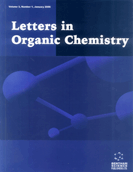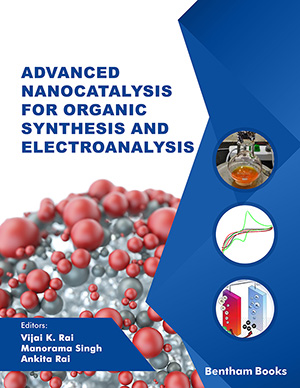Abstract
Despite its narrow therapeutic index and the toxicity issues related to renal injuries, lithium is still a first-line choice for the treatment of mania and for preventing recurrences in bipolar disorder. Nevertheless, side effects and limited efficacy in some of the cases push the search for novel tools to ameliorate these conditions, which still represent a social burden, and great efforts are being made toward the identification of alternative therapeutic options. In this context, rational drug design, drug repurposing, and computer-aided drug discovery represent time-saving and efficient strategies to pursue this goal. Inositol monophosphatase (IMPase) represents the molecular target of lithium which acts as an uncompetitive inhibitor. In this context, a screening on NIH Clinical Collection of drug-like compounds highlighted the polypharmacological drug ebselen (2-phenyl-1,2-benzisoselenazol-3(2H)-one) as a non-competitive, irreversible IMPase inhibitor, suggesting that this molecule could represent a valid therapeutic alternative. In this perspective article, we aim at providing a historical overview of the uses of ebselen with particular attention to its potential use as lithium-mimetic. We critically analyse this aspect by investigating in silico the molecular mechanism leading to the formation of the Se-S bond between IMPase Cys141 and ebselen. Evidence of the bond formation is supported by the crystallographic data Fenn et al. We hypothesize that the IMPase-ebselen complex promotes the association with other IMPase chains, improving the formation of the tetramer adduct, suggesting that ebselen may stabilize the human IMPase in a form that could be less active, resulting in a decreased enzymatic activity.
Keywords: IMPase, ebselen, lithium, bipolar disorder, computational modeling, drug repurposing.
[http://dx.doi.org/10.1186/s40345-019-0151-2] [PMID: 31328245]
[http://dx.doi.org/10.1177/0885066616651582] [PMID: 27516079]
[http://dx.doi.org/10.1016/0014-5793(95)00063-F] [PMID: 7890024]
[http://dx.doi.org/10.5694/j.1326-5377.1949.tb36912.x] [PMID: 18142718]
[http://dx.doi.org/10.1016/0165-6147(91)90581-C] [PMID: 1658998]
[http://dx.doi.org/10.3109/14756369909036548] [PMID: 10445037]
[http://dx.doi.org/10.1016/0165-0173(96)00007-0] [PMID: 8883919]
[http://dx.doi.org/10.1042/bj2490883] [PMID: 2833231]
[http://dx.doi.org/10.1073/pnas.86.5.1475]
[http://dx.doi.org/10.1073/pnas.89.21.10031] [PMID: 1332026]
[http://dx.doi.org/10.1111/j.1432-1033.1993.tb18244.x] [PMID: 8223565]
[http://dx.doi.org/10.1073/pnas.91.13.5766] [PMID: 8016062]
[http://dx.doi.org/10.1039/P19950002695]
[http://dx.doi.org/10.1111/febs.13070] [PMID: 25263816]
[http://dx.doi.org/10.1021/jp312483n] [PMID: 23268704]
[http://dx.doi.org/10.1038/ncomms2320] [PMID: 23299882]
[http://dx.doi.org/10.1021/ja9634278]
[http://dx.doi.org/10.7164/antibiotics.45.1397] [PMID: 1331013]
[http://dx.doi.org/10.1016/0006-2952(84)90084-4]
[http://dx.doi.org/10.1016/0006-2952(84)90083-2] [PMID: 6487370]
[http://dx.doi.org/10.1016/j.freeradbiomed.2013.03.006] [PMID: 23499840]
[http://dx.doi.org/10.1016/B978-0-323-90219-9.00005-4]
[http://dx.doi.org/10.3390/molecules26144230] [PMID: 34299505]
[http://dx.doi.org/10.3390/molecules22030492] [PMID: 28335518]
[http://dx.doi.org/10.1016/j.tet.2011.09.141]
[http://dx.doi.org/10.1002/jlcr.2580230108]
[http://dx.doi.org/10.3390/molecules15118214] [PMID: 21076388]
[http://dx.doi.org/10.1016/j.bmc.2013.12.066] [PMID: 24461494]
[http://dx.doi.org/10.1021/jo00273a035]
[http://dx.doi.org/10.1002/(SICI)1099-1344(199603)38:3<281:AID-JLCR833>3.0.CO;2-1]
[http://dx.doi.org/10.1021/acs.joc.7b00440] [PMID: 28273423]
[http://dx.doi.org/10.1039/C4RA08631G]
[http://dx.doi.org/10.1038/s41586-020-2223-y] [PMID: 32272481]
[http://dx.doi.org/10.3390/app11146291]
[http://dx.doi.org/10.1016/j.ijsu.2020.10.018] [PMID: 33120196]
[http://dx.doi.org/10.1002/minf.202100028] [PMID: 34018687]
[http://dx.doi.org/10.1038/s41467-021-23313-7] [PMID: 34031399]
[http://dx.doi.org/10.1016/S0140-6736(17)31791-9] [PMID: 28716314]
[http://dx.doi.org/10.3390/ECCS2020-07589]
[http://dx.doi.org/10.1021/acschemneuro.0c00328] [PMID: 32840996]
[http://dx.doi.org/10.3389/fphar.2020.630500] [PMID: 33597888]
[http://dx.doi.org/10.1007/s00204-011-0720-3] [PMID: 21720966]
[http://dx.doi.org/10.1055/s-0028-1111106]
[http://dx.doi.org/10.1007/s00213-015-4189-2] [PMID: 26758281]
[http://dx.doi.org/10.1039/c3mt00309d] [PMID: 24413471]
[http://dx.doi.org/10.1016/j.bcp.2013.08.028] [PMID: 24012716]
[http://dx.doi.org/10.1039/D0NJ01605E]
[http://dx.doi.org/10.1021/acschembio.6b00031] [PMID: 26949981]
[http://dx.doi.org/10.1515/BC.2007.138]
[http://dx.doi.org/10.1016/j.redox.2020.101540] [PMID: 32428845]
[http://dx.doi.org/10.1021/acs.joc.2c01454] [PMID: 35951408]
[http://dx.doi.org/10.1021/ja00197a065]
[http://dx.doi.org/10.1016/j.cclet.2020.01.027]
[http://dx.doi.org/10.1016/j.cclet.2020.06.033]
[http://dx.doi.org/10.1016/j.cclet.2021.05.061]
[http://dx.doi.org/10.1039/D2NJ02744E]
[http://dx.doi.org/10.3389/fonc.2018.00525] [PMID: 30524958]
[http://dx.doi.org/10.1016/j.cbi.2022.110196] [PMID: 36174737]
[http://dx.doi.org/10.3390/ijms23042360] [PMID: 35216476]
[http://dx.doi.org/10.1016/j.cclet.2021.03.047]
[http://dx.doi.org/10.1111/bph.14179] [PMID: 29488218]
[http://dx.doi.org/10.1016/j.csbj.2019.02.004] [PMID: 30867894]
[http://dx.doi.org/10.3390/app9173631]
[http://dx.doi.org/10.3390/antiox9080714] [PMID: 32781750]
[http://dx.doi.org/10.1039/D0RA03509B] [PMID: 35518299]
[http://dx.doi.org/10.1021/acsomega.1c05567] [PMID: 35309454]
[http://dx.doi.org/10.1021/acschemneuro.2c00129] [PMID: 35605134]
[http://dx.doi.org/10.1016/j.ejphar.2021.174570] [PMID: 34653379]
[http://dx.doi.org/10.1007/s11064-020-03190-0] [PMID: 33548035]
[http://dx.doi.org/10.1016/j.ejphar.2008.10.055] [PMID: 19026628]
[http://dx.doi.org/10.1038/npp.2015.343] [PMID: 26593266]
[http://dx.doi.org/10.1107/S2053230X20011310] [PMID: 33006574]
[http://dx.doi.org/10.1042/bj2850461] [PMID: 1322134]
[http://dx.doi.org/10.1007/978-1-4939-2269-7_19]
[http://dx.doi.org/10.1002/jcc.21334] [PMID: 19499576]
[http://dx.doi.org/10.1063/1.464913]
[http://dx.doi.org/10.1007/s002149900065]
[http://dx.doi.org/10.1002/wcms.30]
[http://dx.doi.org/10.1063/1.2065267] [PMID: 16252936]
[http://dx.doi.org/10.1002/cphc.201700743] [PMID: 28837255]
[http://dx.doi.org/10.1021/ct400065j] [PMID: 23585741]
[http://dx.doi.org/10.1021/jp810292n] [PMID: 19366259]
[http://dx.doi.org/10.1002/cplu.202000660] [PMID: 33215863]
[http://dx.doi.org/10.1021/acscatal.0c03420] [PMID: 34192089]
[http://dx.doi.org/10.1039/D0SC06195F] [PMID: 34163906]
[http://dx.doi.org/10.1038/s41467-018-04114-x] [PMID: 29703933]
[http://dx.doi.org/10.1016/j.abb.2011.11.020] [PMID: 22182754]
[http://dx.doi.org/10.1111/j.0014-2956.2007.05779.x] [PMID: 17419729]
 26
26 3
3

























